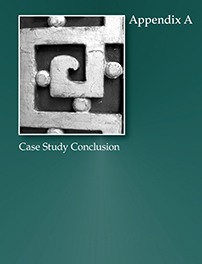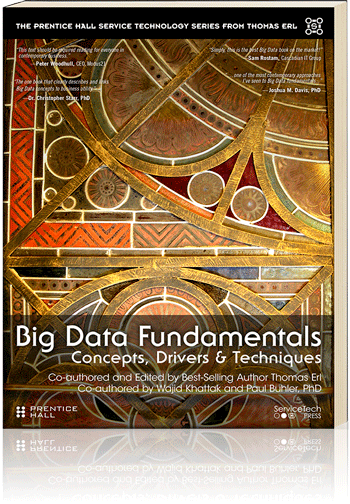Below are descriptions of individual parts and chapters:
Part I: The Fundamentals of Big Data
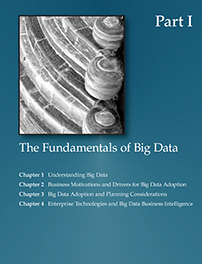
Chapter 1: Understanding Big Data
Chapter 2: Business Motivations and Drivers for Big Data Adoption
Chapter 3: Big Data Adoption and Planning Considerations
Chapter 4: Enterprise Technologies and Big Data Business Intelligence
Chapter 1: Understanding Big Data
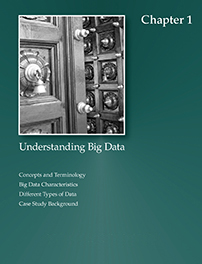 This chapter 1 delivers insight into key concepts and terminology that define the very essence of Big Data and the promise it holds to deliver sophisticated business insights. The various characteristics that distinguish Big Data datasets are explained, as are definitions of the different types of data that can be subject to its analysis techniques.
This chapter 1 delivers insight into key concepts and terminology that define the very essence of Big Data and the promise it holds to deliver sophisticated business insights. The various characteristics that distinguish Big Data datasets are explained, as are definitions of the different types of data that can be subject to its analysis techniques.
Chapter 2: Business Motivations and Drivers for Big Data Adoption
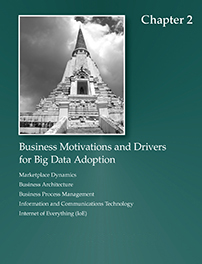 This chapter seeks to answer the question of why businesses should be motivated to adopt Big Data as a consequence of underlying shifts in the marketplace and business world. Big Data is not a technology related to business transformation; instead, it enables innovation within an enterprise on the condition that the enterprise acts upon its insights.
This chapter seeks to answer the question of why businesses should be motivated to adopt Big Data as a consequence of underlying shifts in the marketplace and business world. Big Data is not a technology related to business transformation; instead, it enables innovation within an enterprise on the condition that the enterprise acts upon its insights.
Chapter 3: Big Data Adoption and Planning Considerations
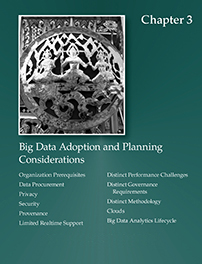
This chapter shows that Big Data is not simply “business as usual,” and that the decision to adopt Big Data must take into account many business and technology considerations. This underscores the fact that Big Data opens an enterprise to external data influences that must be governed and managed. Likewise, the Big Data analytics lifecycle imposes distinct processing requirements.
Chapter 4: Enterprise Technologies and Big Data Business Intelligence
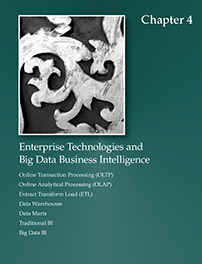 This chapter examines current approaches to enterprise data warehousing and business intelligence. It then expands this notion to show that Big Data storage and analysis resources can be used in conjunction with corporate performance monitoring tools to broaden the analytic capabilities of the enterprise and deepen the insights delivered by Business Intelligence.
This chapter examines current approaches to enterprise data warehousing and business intelligence. It then expands this notion to show that Big Data storage and analysis resources can be used in conjunction with corporate performance monitoring tools to broaden the analytic capabilities of the enterprise and deepen the insights delivered by Business Intelligence.
Part II: Storing and Analyzing Big Data
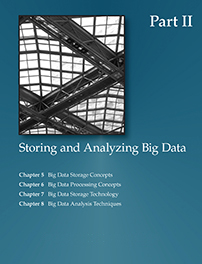
Chapter 5: Big Data Storage Concepts
Chapter 6: Big Data Processing Concepts
Chapter 7: Big Data Storage Technology
Chapter 8: Big Data Analysis Techniques
Appendix A: Case Study Conclusion
Chapter 5: Big Data Storage Concepts
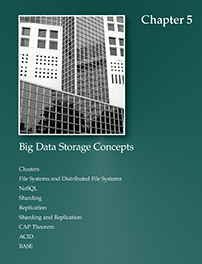 This chapter explores key concepts related to the storage of Big Data datasets. These concepts inform the reader of how Big Data storage has radically different characteristics than the relational database technology common to traditional business information systems.
This chapter explores key concepts related to the storage of Big Data datasets. These concepts inform the reader of how Big Data storage has radically different characteristics than the relational database technology common to traditional business information systems.
Chapter 6: Big Data Processing Concepts
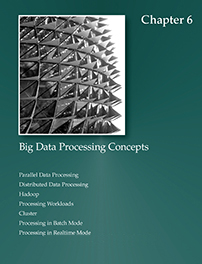 This chapter provides insights into how Big Data datasets are processed by leveraging distributed and parallel processing capabilities. This is further illustrated with an examination of the MapReduce framework, which shows how it leverages a divide-and-conquer approach to efficiently process Big Data datasets.
This chapter provides insights into how Big Data datasets are processed by leveraging distributed and parallel processing capabilities. This is further illustrated with an examination of the MapReduce framework, which shows how it leverages a divide-and-conquer approach to efficiently process Big Data datasets.
Chapter 7: Big Data Storage Technology
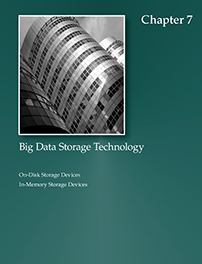
This chapter expands upon the storage topic, showing how the concepts from Chapter 5 are implemented with different flavors of NoSQL database technology. The requirements of batch and realtime processing modes are further explored from the perspective of on-disk and in-memory storage options.
Chapter 8: Big Data Analysis Techniques
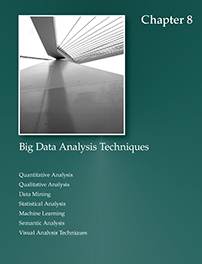
This chapter provides an introduction to a range of Big Data analysis techniques. The analysis of Big Data leverages statistical approaches for quantitative and qualitative analysis, whereas computational approaches are used for data mining and machine learning.
Appendix A: A Case Study Conclusion
